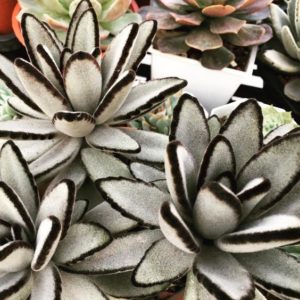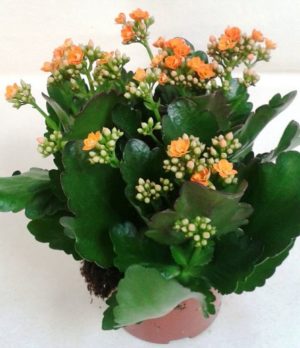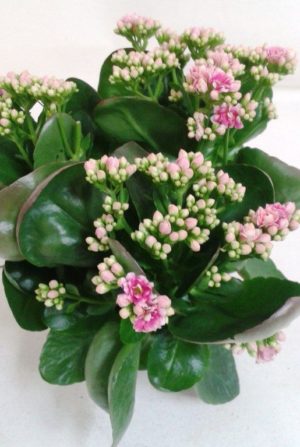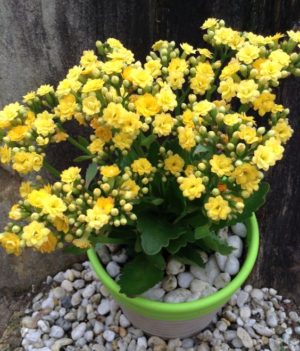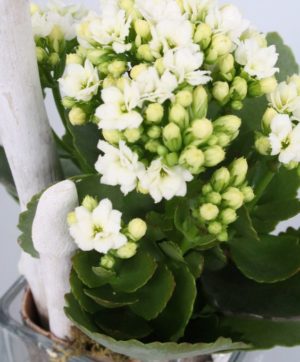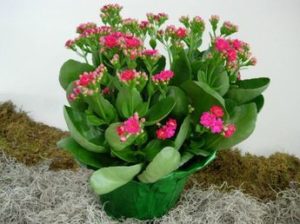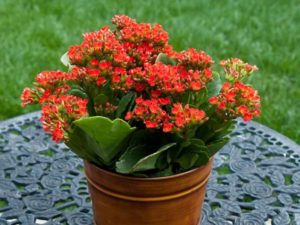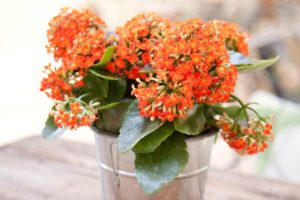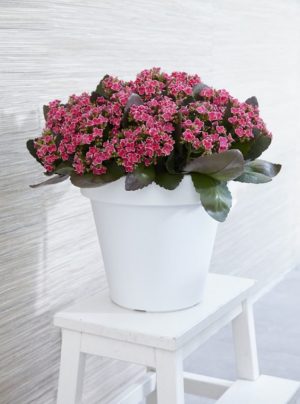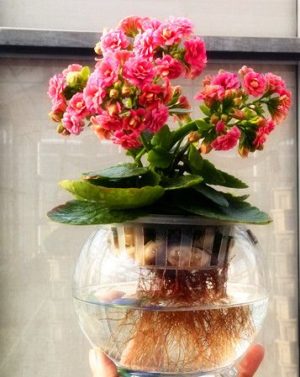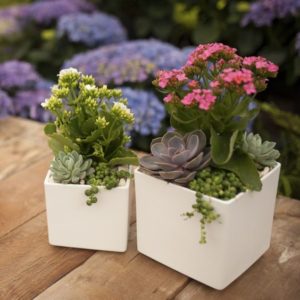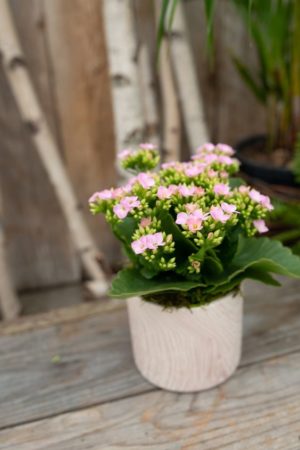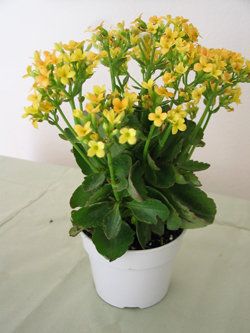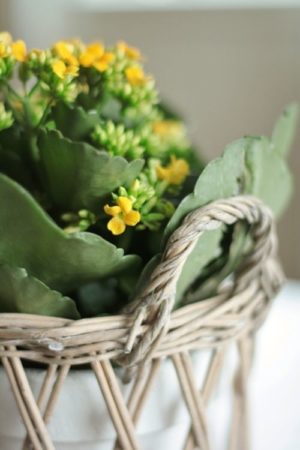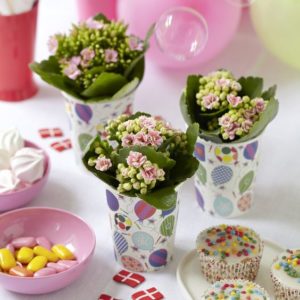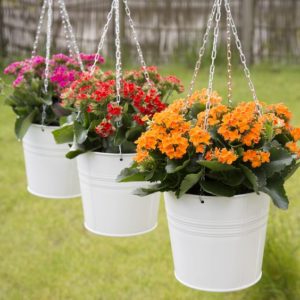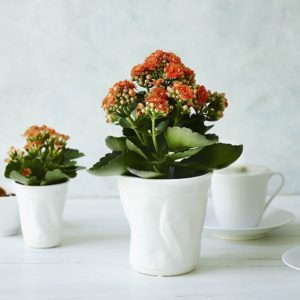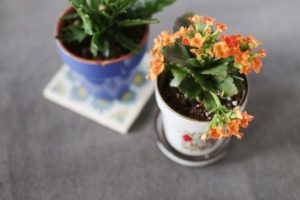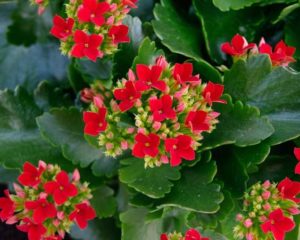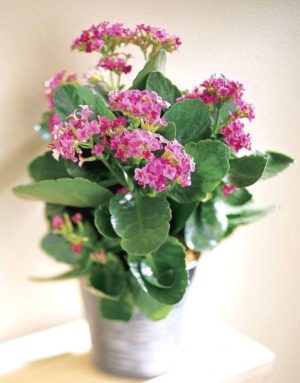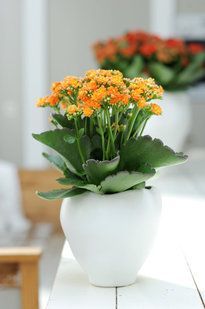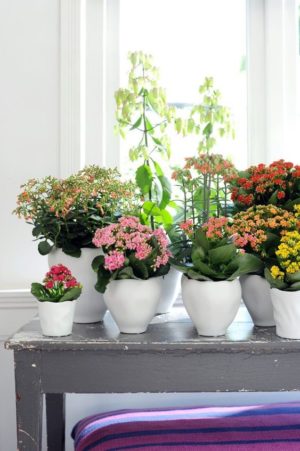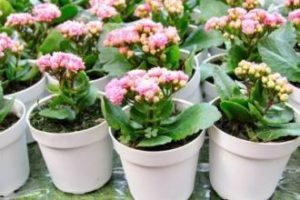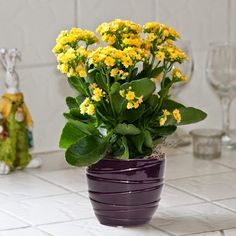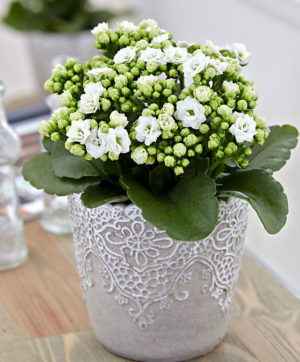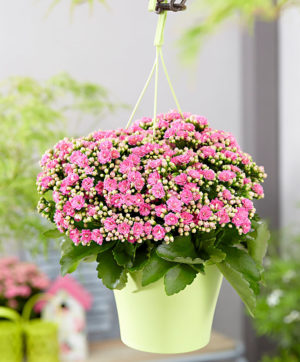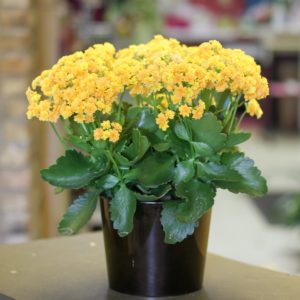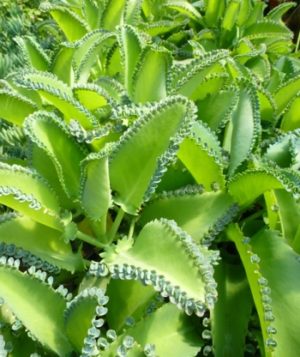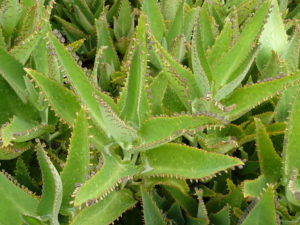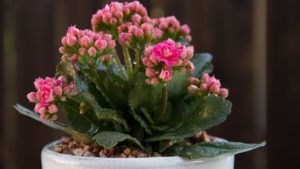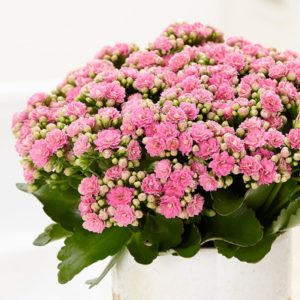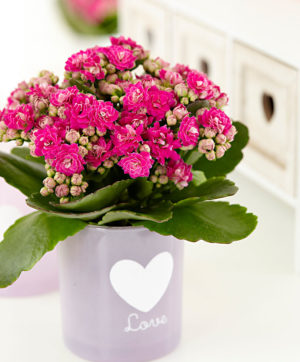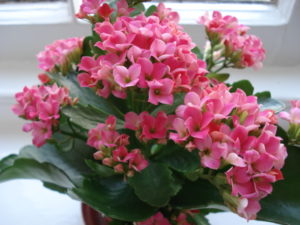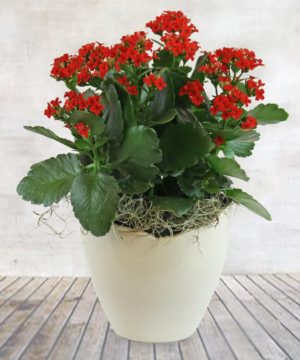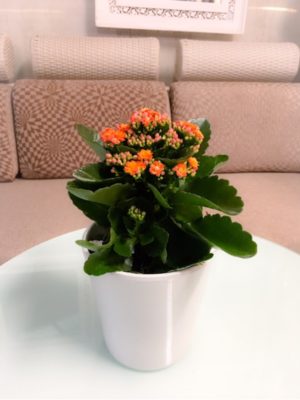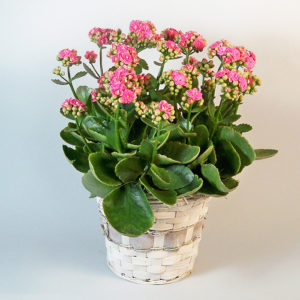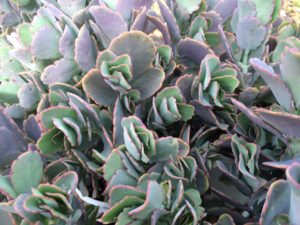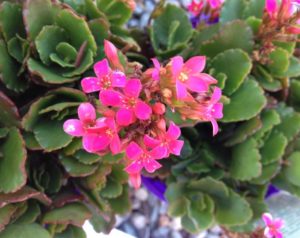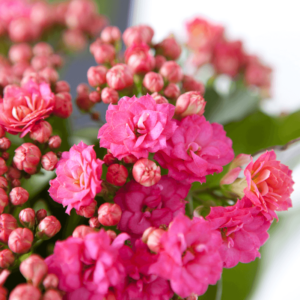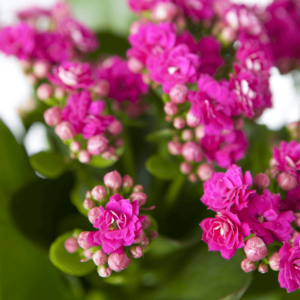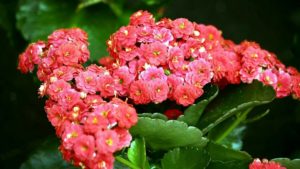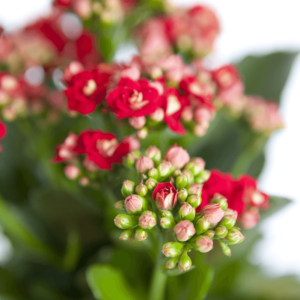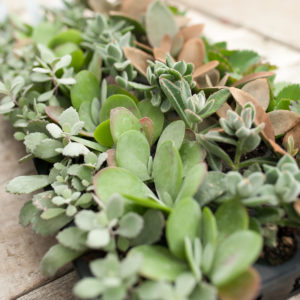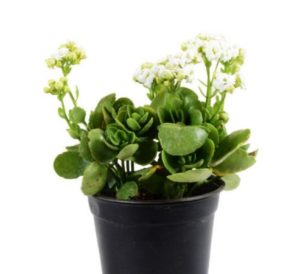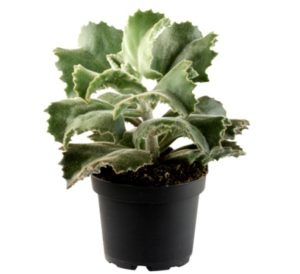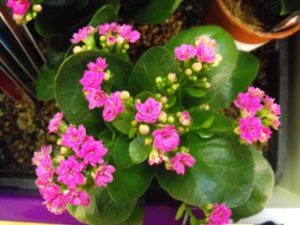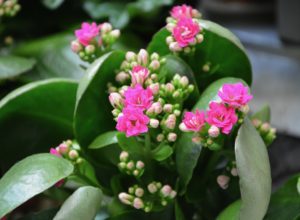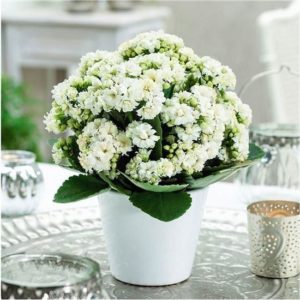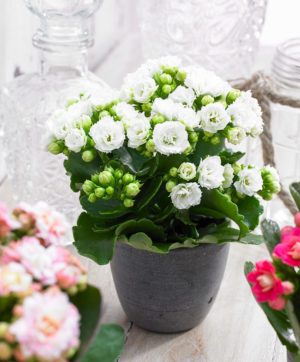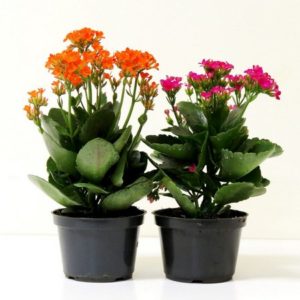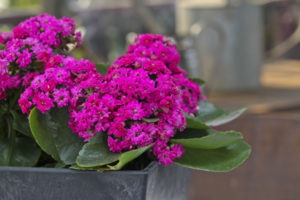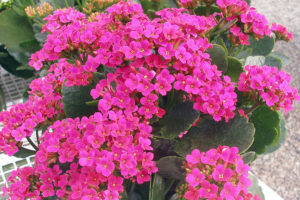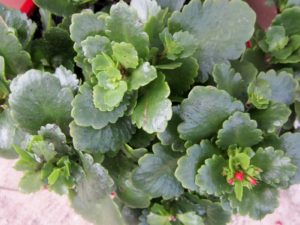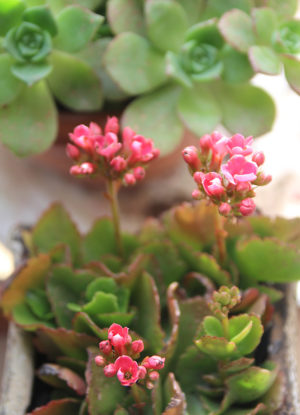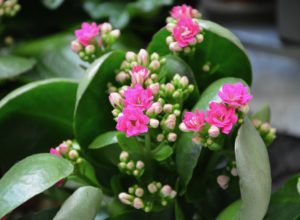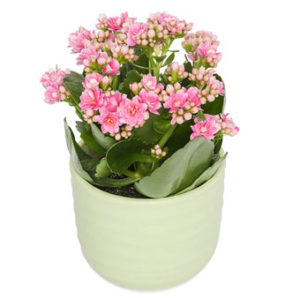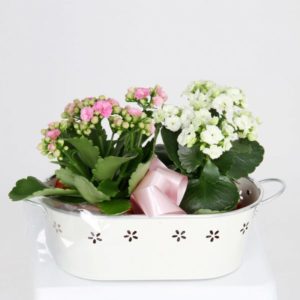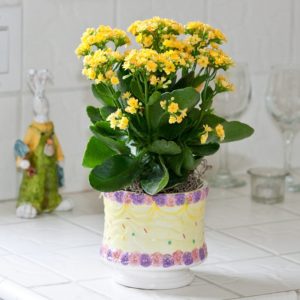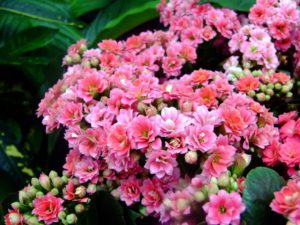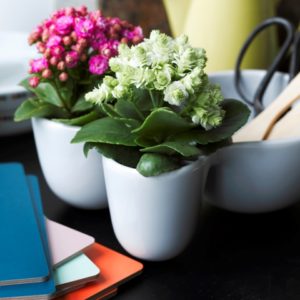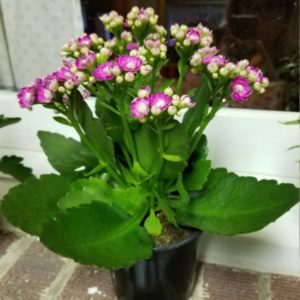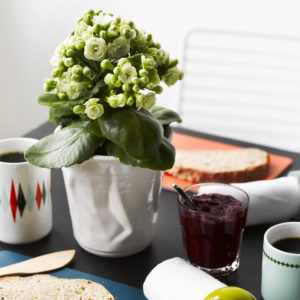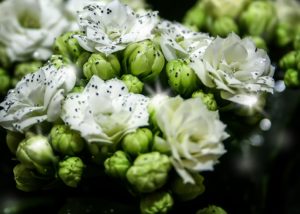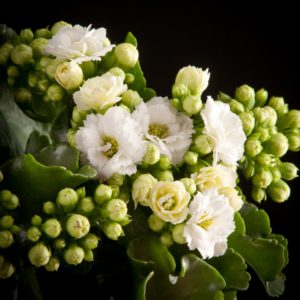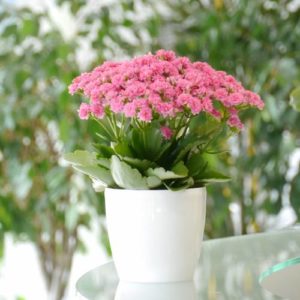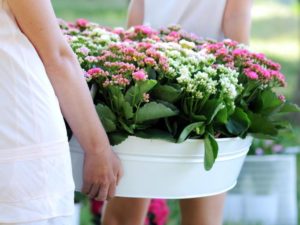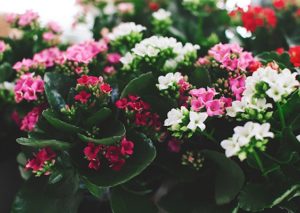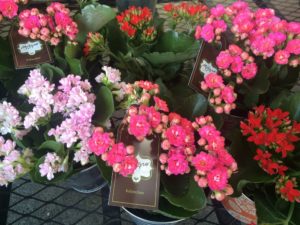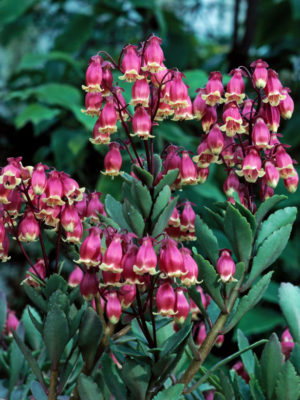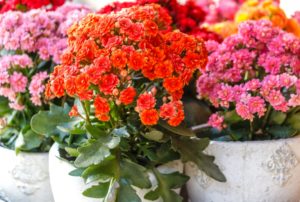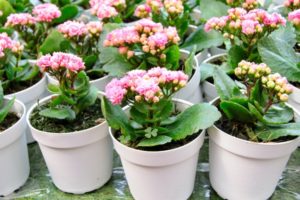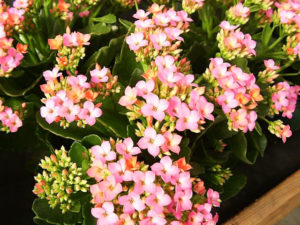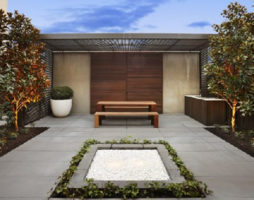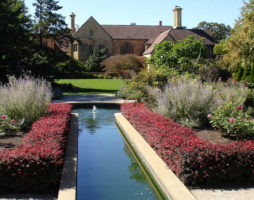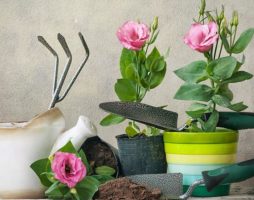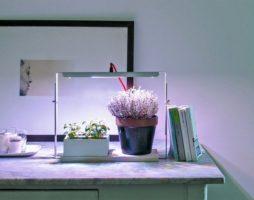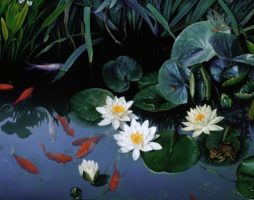Currently, the Kalanchoe flower is grown by many flora lovers at home. Such popularity of the plant is directly related to its medicinal properties, which help a person cope with many ailments.
With proper care, Kalanchoe grows well and develops on the windowsill, in addition, it is unpretentious to the composition of the soil. Under certain conditions, many representatives of this family throw out flowers of different shades, but in most species the flowering period is not very long. Let's see how to grow Kalanchoe at home and how to care for it.
Types of Kalanchoe with a photo
Flower growers can grow various types of Kalanchoe flower on their windowsills. Blossfeld's Kalanchoe is very popular with many people. This variety is distinguished by its small size and height of not more than 45 cm, as well as its bushy shape. It has dark green leaves with a smooth surface and a wavy edge. With proper care for Kalanchoe Blossfeld during the flowering period, beautiful flowers of various shades appear on the bush.

Kalanchoe Blossfeld
A new flower was later bred from this variety, which inherited many characteristics from its progenitor, including size. Caring for Kalanchoe Kalandiva at home is simple, and the variety is famous for its magnificent velvety flowers. The flowering period of this species of Kalanchoe lasts from mid-spring and lasts until autumn. At the end of flowering, it is recommended to cut the elongated stems and reduce watering. In order for the plant to rest, it should be moved to partial shade.
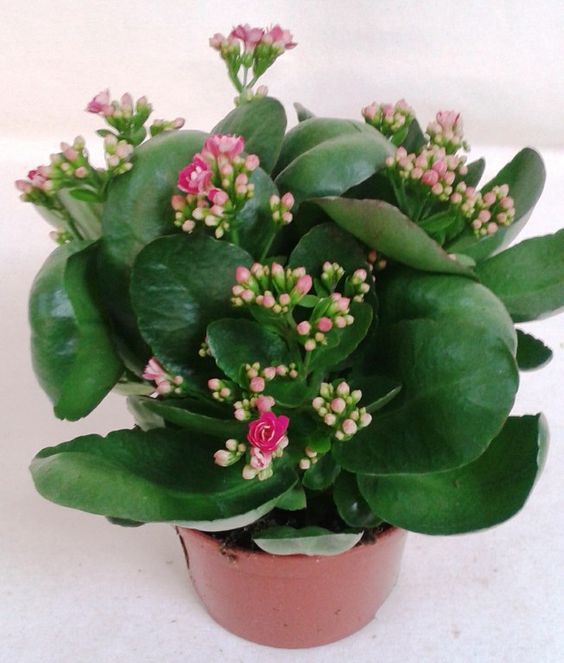
Unpretentious Kalanchoe Kalandiva
The most unusual color of the leaves of the marble Kalanchoe. Its light green leaves are covered with unusually beautiful dark brown spots. This Kalanchoe blooms with long snow-white flowers.
As you can see in the photo, Kalanchoe felt has a unique distinguishing feature - a brown stripe that runs along the edge of silver-green leaves. The plant got its name for the unusual surface of the oblong leaves, they are, as it were, covered with a layer of soft fluff.
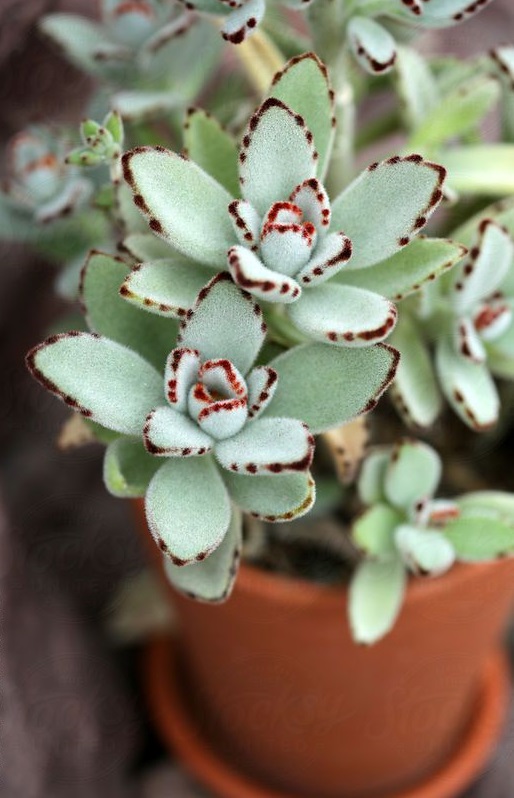
Kalanchoe felt
One cannot ignore the popular decorative flowering species called Kalanchoe Mangina. This variety is distinguished by small leaves and a drooping stem. During flowering, the plant produces flowers in the form of bells, up to 2 centimeters in size.
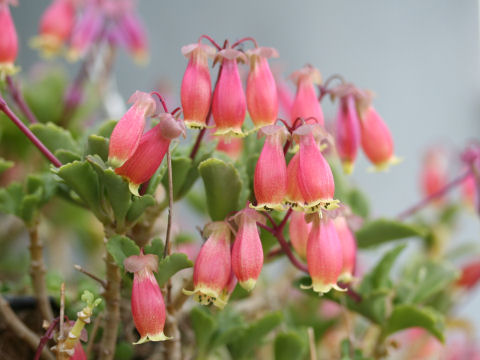
Kalanchoe Mangina produces bell-shaped flowers
Kalanchoe pinnate and Kalanchoe Degremont are very popular. Young plants of these varieties can form directly on the leaves of an adult flower. Distinctive features of these species are a straight stem and elongated leaves. Babies can appear from brood buds that form on the leaves between the teeth.They, while still on an adult plant, release roots that allow them to quickly take root when they hit the ground.
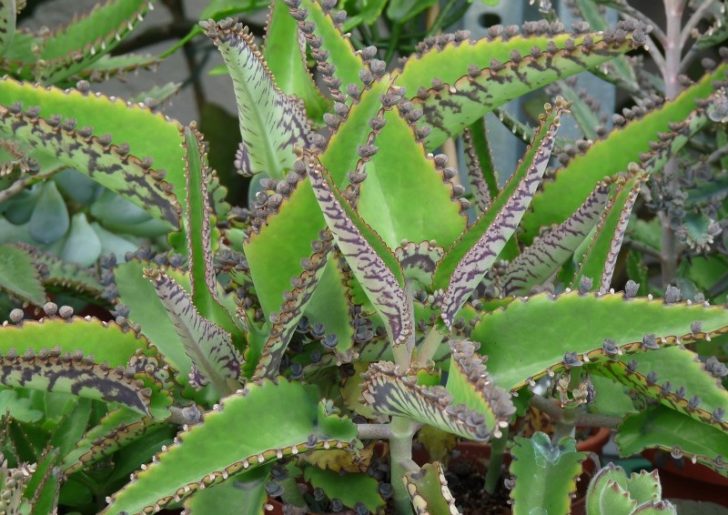
Kalanchoe Degremont
Often at flower growers you can also find Bekhar Kalanchoe. This plant is more like a semi-shrub with erect stems. On its triangular leaves with rounded edges, a gray-blue bloom can be seen. The flowering period is in the summer, at which time small yellow flowers appear on the plant.
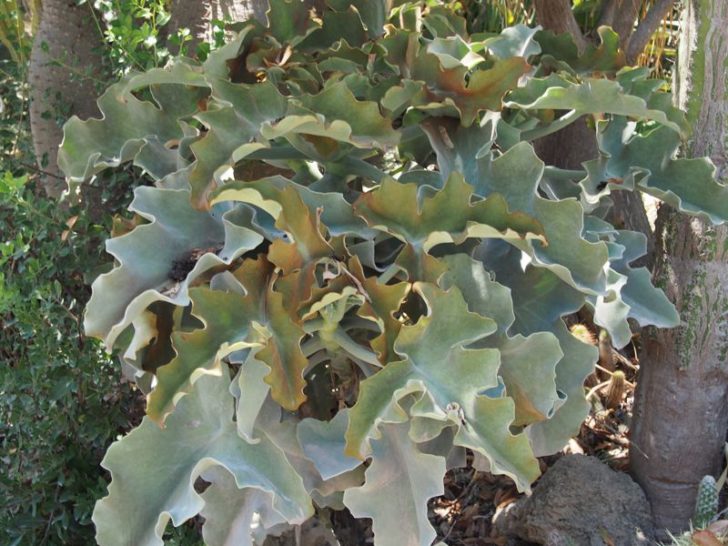
Kalanchoe beharskoe is more like a shrub
One of the most unusual representatives of this family is Kalanchoe paniculata. It is easily recognizable by its rounded bicolor leaves. The predominant part of the leaf has a light green color, and along the edges it acquires a reddish tint. This Kalanchoe blooms with small yellow flowers.
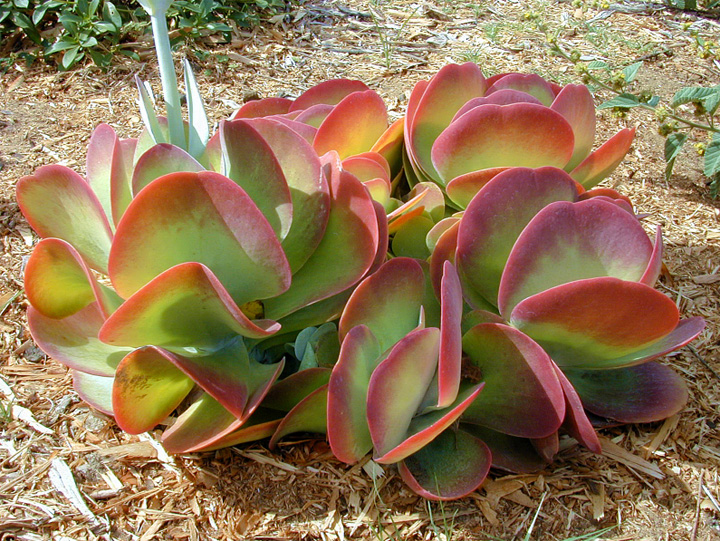
Kalanchoe paniculata with rounded bicolor leaves
How to care for Kalanchoe at home
Placement and lighting
“When caring for medicinal Kalanchoe at home on summer days, you should artificially reduce the length of time the plant stays in the light”
Kalanchoe grows and develops well in the western and eastern parts of the apartment. Direct sunlight falling on the leaves of the plant can cause burns. If you want to use not only its healing properties, but also admire beautiful flowers, then you need to provide Kalanchoe with special conditions.
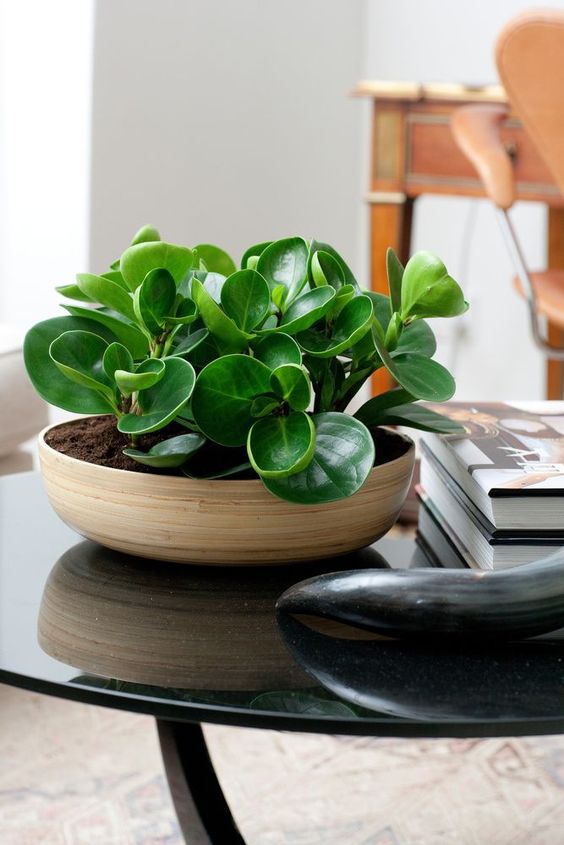
Kalanchoe is quite enough 12-hour stay under diffused lighting
When caring for therapeutic Kalanchoe at home on summer days, you should artificially reduce the length of time the plant stays in the light. Kalanchoe should remain on a well-lit window sill only until 3 pm, and then it must be moved to a shaded place. In this case, it is not at all necessary to transfer the plant to another room, but only lower it from the windowsill to the floor or gently cover the flower with a light opaque cloth. A 12-hour stay under diffused lighting is quite enough for Kalanchoe to throw out the buds and bloom, so with the approach of autumn and the reduction of daylight hours, there will no longer be a need to move or cover the flower. With insufficient lighting, the plant will become thin and elongated, and its flowers will be small and weak, such a Kalanchoe can hardly be called beautiful and healthy.
Temperature
The Kalanchoe flower is absolutely unpretentious to the temperature regime. In summer, he feels great at temperatures from 20 to 24 degrees, and with the onset of cold weather, it is desirable to reduce the temperature to 12-15 degrees. If in winter this plant spends in a very hot room, then it will not be able to form flower buds and bloom. Kalanchoe is not afraid of drafts, so the room can and should be ventilated, and in the summer, if possible, take the plant to fresh air.
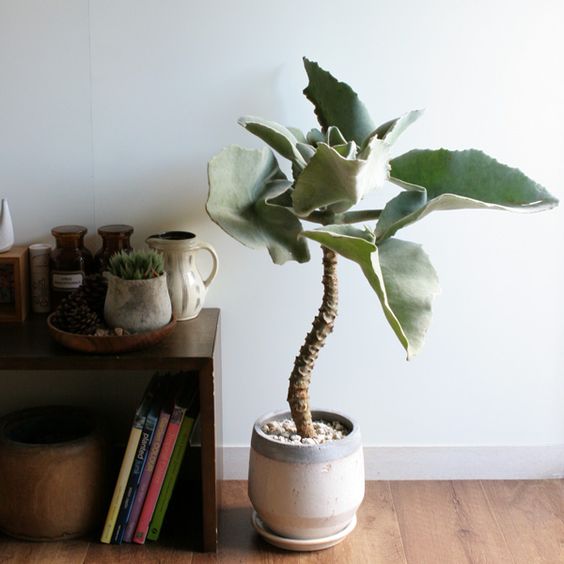
Kalanchoe is unpretentious to the temperature regime.
The soil
Kalanchoe can be grown in any type of nutrient soil, flower growers plant this plant in soil for succulents. The composition of this soil includes both leaf and sod land, as well as peat and sand. Such soil can be purchased at every flower shop or prepared independently.
Watering
Caring for Kalanchoe flowers at home involves moderate watering. In summer, the frequency of watering should be from 1 to 2 times a week, and with the onset of cold weather, it is recommended to reduce the amount of moisture. Enough moisture can accumulate in the succulent leaves of this flower, so the plant will not die if one day you skip this procedure. Be sure to keep the soil in the pot dry, as over-watering can lead to fungus.
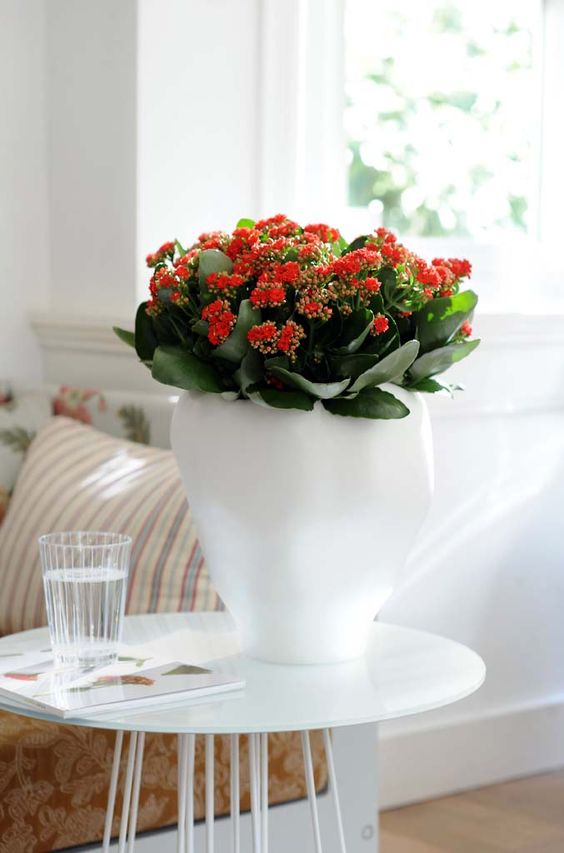
Kalanchoe prefers moderate watering
Moisturizing
The moisturizing procedure is carried out only when caring for decorative Kalanchoe with smooth leaves.If you have a flower with leaves that are covered with a layer of fluff, then such a plant cannot be sprayed. During watering, make sure that moisture does not get on the surface of the leaves.
Air humidity
This unpretentious plant grows well both in a dry place and in conditions of high humidity. For hygienic purposes, it is recommended to periodically spray the leaves of the plant, and after completing the water procedures, wipe them with a soft cloth.

Spray Kalanchoe leaves periodically
Top dressing and fertilizer
The plant can be fertilized by any means that are intended for cacti. When caring for decorative Kalanchoe at home, it is recommended to feed it according to the following scheme: in the period from mid-May to mid-July, it is necessary to feed 1 every two weeks. After that, you should take a short break and continue only at the end of autumn, when buds for flowering begin to form on the plant.

Top dressing is carried out every two weeks
Transfer
Kalanchoe has a well-developed root system, which, with proper care, is very actively developing. This is especially true for young flowers, which are recommended to be transplanted quite often.
Many flower growers do not buy ready-made mixtures for flowers in stores, but prefer to prepare the soil on their own. To grow Kalanchoe, it is necessary to take equal parts of leafy and soddy soil, as well as sand and peat, mix them well and add a little charcoal or activated charcoal. Instead of sand, you can use perlite, or add it to the resulting mixture, this will allow the soil to pass water well and not stagnate on the surface. In order for excess water to drain down, lay a layer of expanded clay or drainage on the bottom of the pot.
If the plant grows and develops well, then it is better to choose a May day for its transplantation, during this period, flowers begin to actively develop in Kalanchoe. But if your plant is affected by a fungus or other disease, then any time is suitable for such an emergency transplant.

For a transplant, it is better to choose a May day
When caring for Kalanchoe at home during flowering, a transplant is undesirable. If you have not had time to transplant your flower, then it is better to wait until it has completely faded.
It is necessary to transplant the plant into soil that has the same composition as it was originally in, with the exception of the first transplant, when it is impossible to determine the composition of the existing soil.
Features of flowering
How to care for flowering Kalanchoe so that it blooms longer? The plant can bloom only in good light, without which buds cannot form on it. If the plant receives enough natural light, then in the summer it will surely please you with beautiful and bright flowers.
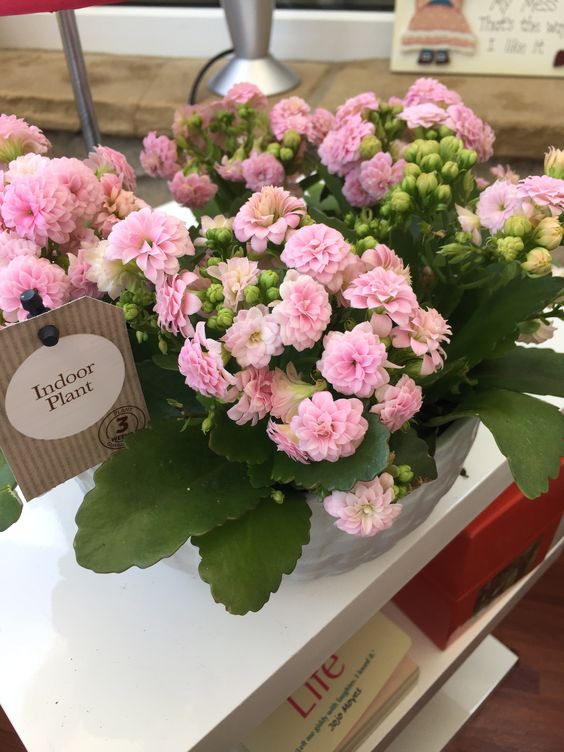
Kalanchoe can bloom in the cold season
As you can see in the photo, Kalanchoe can bloom in winter. To do this, in the summer, it should be in the light for no more than 10 hours. When caring for Kalanchoe, when it blooms in the cold season, it is not recommended to place the pot near heat sources. Extreme heat will prevent bud formation, so it's best to move your flower to a cool room.
Pinching and trimming
An adult Kalanchoe can be given a beautiful shape, for this it is necessary to periodically trim and pinch it.
The pruning procedure is usually performed in the spring, when the shoots of the plant stretch and rush in different directions. To form a beautiful bush, the stems of Kalanchoe are reduced by half of their original length.
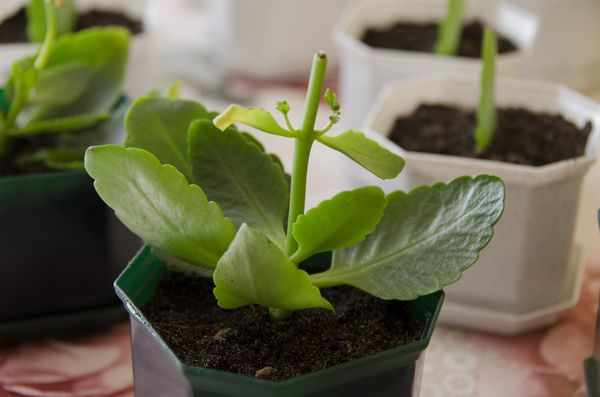
Needs to be pruned periodically
With proper care for Kalanchoe blooming at home, pinching the shoots is not carried out. It can be done in the summer, when flowering has already ended. This procedure is more necessary for young plants.
Reproduction of Kalanchoe
It is not necessary to purchase Kalanchoe in the store, such a plant can be propagated at home. Any beginner florist can handle this procedure. You can propagate Kalanchoe by dividing an adult bush into several parts, root a cutting, plant a leaf or sow seeds.
An adult bush is divided into parts in special cases, for example, when they want to rejuvenate their plant. This method is very traumatic, since the resulting parts do not always take root well.
For propagation of Kalanchoe, flower growers usually use the method of rooting cuttings. Young stems very quickly release roots and take root well in a new place. A month later, a small bush will begin to form from the cutting. A leaf plucked from an adult plant can also take root well, but an adult plant from a leaflet will turn out only after a year.
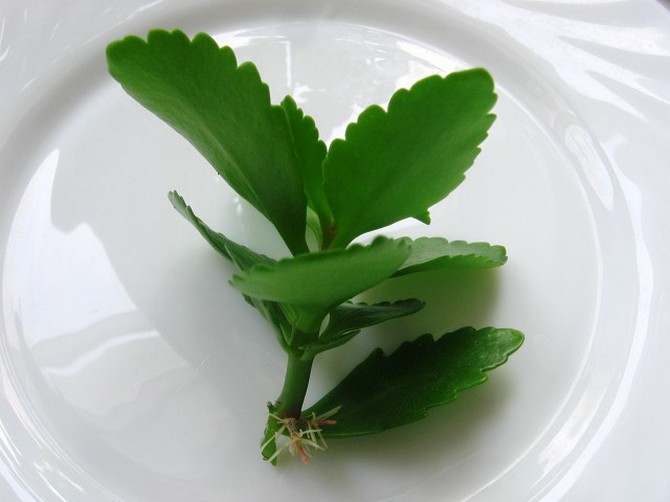
Cuttings take root very quickly.
It is quite possible to grow Kalanchoe from seeds, but the small size of the seed will make this process much more difficult. Let's see how to care for a Kalanchoe flower when planting:
- Individual seeds must be laid on the earthen surface, but do not cover them with a layer of soil, but only lightly press down.
- After that, the container with the planted seeds should be covered with a film or glass.
- When the sown seeds sprout, you can remove the protective film or glass and move your plants to a place with good lighting.
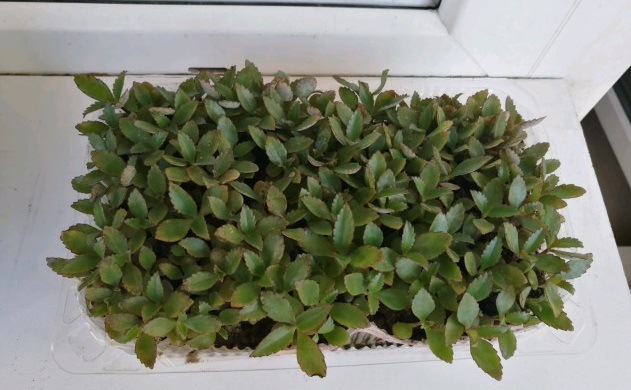
Kalanchoe is quite possible to grow from seeds
Home care for an adult Kalanchoe flower with a photo
Unpretentious in care, decorative Kalanchoe must be regularly watered and fed monthly, then it will develop well and bloom. You can give the flower a beautiful shape by cutting or pinching so that individual shoots do not stretch to the sides.
The plant is recommended to be replanted annually, for this you should choose a larger pot and move Kalanchoe into it, trying not to damage the roots.
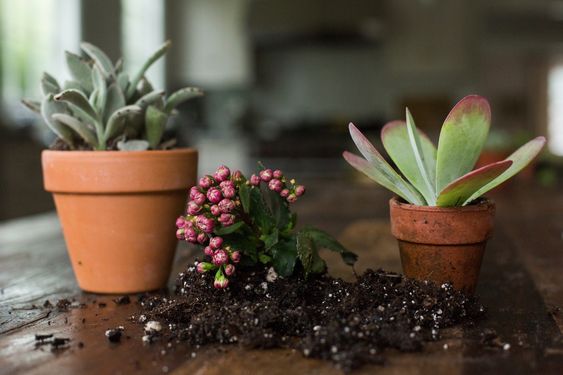
Kalanchoe is recommended to be transplanted annually
After 5 years of life, the flower begins to age. At home, for medicinal Kalanchoe, even with proper and regular care, yellow leaves appear on it, which eventually fall off. Such a bush needs to be rejuvenated by cuttings or division.
A plant purchased in a store must be transplanted so that the seedling can develop in favorable conditions. To do this, it is necessary to prepare a pot, drainage and soil of the appropriate composition. The transplanted Kalanchoe should be well moistened and placed in a bright and warm place where it can acclimatize faster.
back to index ↑How to care for Kalanchoe flowers in case of illness
“The need for therapeutic care for Kalanchoe at home is also indicated by a grayish coating, consisting of the smallest insects - scale insects”
Pests
The main enemy of Kalanchoe is aphids. These small greenish insects appear on the stem and leaves of the plant and block its access to nutrients. If there are too many aphids on Kalanchoe, then the leaves of the plant will begin to turn yellow, the buds that appear will fall off without opening, and the plant may even die. How to care for domestic Kalanchoe and what conditions to create in this case?
A flower affected by aphids should be immediately treated with a household or potassium soap solution, make sure that these substances do not get into the ground. But if the lesions are too large, then the most affected parts of the plant will have to be burned, and the remaining shoots should be treated with a solution of potassium soap.
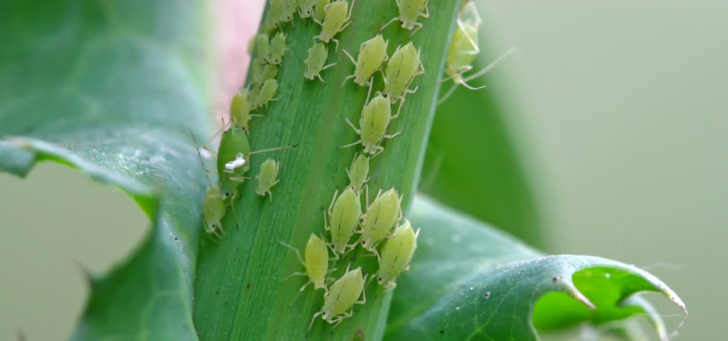
A flower affected by aphids
The need for therapeutic care for Kalanchoe at home is also indicated by a grayish coating, consisting of the smallest insects - scale insects. The condition of a plant affected by this pest deteriorates significantly, it practically does not bloom, a fungus appears on its leaves and stem.Scale insects form and secrete mucus on the plant, which can be removed with an alcohol solution, then it is necessary to remove harmful insects with a brush and treat the affected areas with alcohol again. After such a procedure, the plant will soon be able to recover on its own and will develop well.
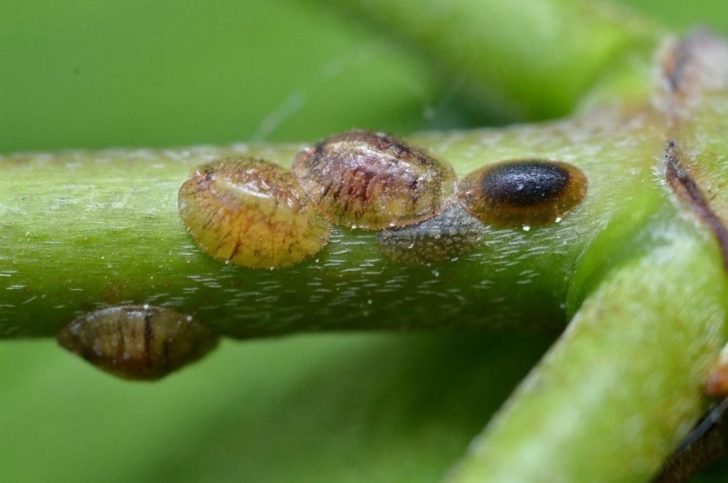
Shield on Kalanchoe
Why Kalanchoe does not grow
Slow growth is usually associated with insufficient plant nutrition. This happens when the soil in the pot has already been depleted, and new food is not supplied along with top dressing. The easiest and most effective way is to transplant the plant into new soil that is rich in nutrients.
Why Kalanchoe dries up
The drying of the plant is usually associated with a regular deficiency of moisture in the soil. Review your Kalanchoe watering schedule, in most cases this will solve the problem. In addition, the wrong composition of the soil or the parasites present in it can lead to the drying of the plant. In this case, it is recommended to transplant your flower into a new soil.
Why do leaves turn yellow on Kalanchoe
The reason for the wilting of the leaves lies in the violation of the conditions for caring for home Kalanchoe, including both excess and lack of natural light. If the plant does not receive enough light, then its upper leaves may turn yellow, and the lower ones will begin to fall off. With excessive lighting, Kalanchoe leaves do not fall off, but only turn yellow throughout the plant.
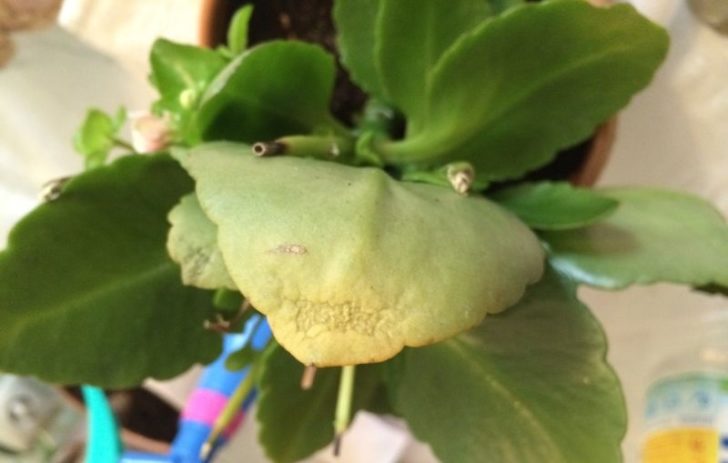
yellowing of kalanchoe leaves
Why Kalanchoe does not bloom
For flowering, this plant needs proper care - and you already know how to care for a flowering Kalanchoe so that it blooms. Compare your actions with the recommendations for growing a plant, identify your mistakes and eliminate them. Usually flower growers apply too much fertilizer, so just reduce the amount of top dressing, and soon this flower will delight you with lush flowering.
back to index ↑Conclusion
As you can see, absolutely everyone can grow Kalanchoe at home. Even a novice florist will cope with basic simple recommendations that will help provide the plant with suitable soil, as well as enough moisture and nutrients.
Photo gallery - Kalanchoe
Video
